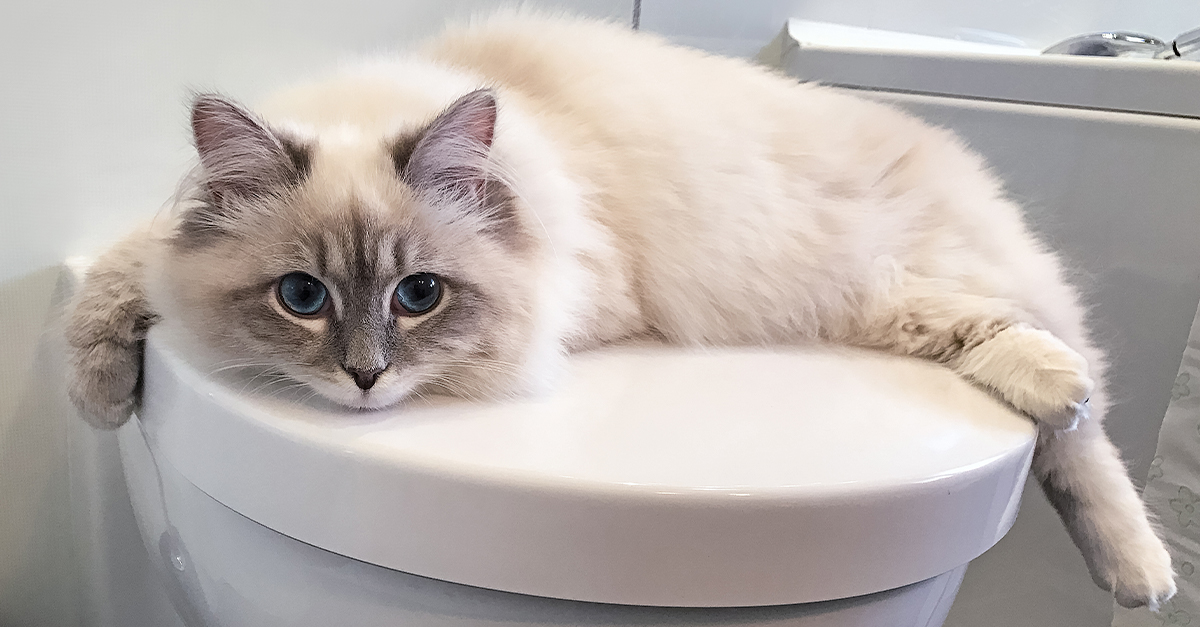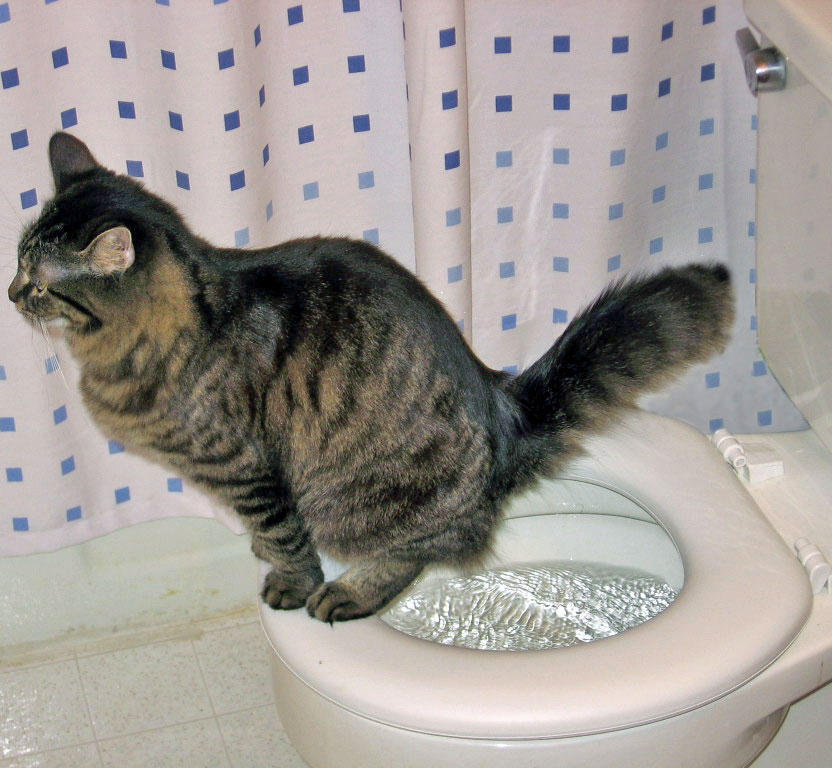Just how do you feel when it comes to Don't Flush Your Pets Poo Down The Loo, Vet Warns?

When it comes to disposing of waste, particularly animal waste, many people commonly turn to the convenient alternative of flushing it down the toilet. Nonetheless, this seemingly simple option can have significant consequences for the atmosphere and public health. In this post, we'll discover why flushing pet waste down the toilet is a bad idea and provide alternative methods for correct disposal.
Intro
Correct garbage disposal is critical for keeping ecological sustainability and public health. While it may seem safe to purge animal waste down the bathroom, it can bring about different problems, both for the environment and human health.
Dangers of flushing animal waste
Ecological effect
Flushing pet waste introduces harmful bacteria and microorganisms into rivers, which can adversely affect marine communities. These virus can contaminate water sources and damage aquatic life, disrupting delicate environments.
Public health problems
Animal waste includes dangerous microorganisms such as E. coli and Salmonella, which can posture serious health risks to human beings. Purging pet waste down the commode can infect water materials, causing the spread of conditions and infections.
Alternatives to flushing
Rather than flushing animal waste down the toilet, there are numerous different disposal methods that are extra environmentally friendly and hygienic.
Composting
Composting pet waste is a green method to throw away it. By composting, organic matter is broken down into get more info nutrient-rich soil, which can be utilized to feed yards and plants.
Garbage dump disposal
Dealing with animal waste in a landfill is an additional alternative. While not as environmentally friendly as composting, it is a safer choice to flushing, as it avoids the contamination of water sources.
Family pet garbage disposal systems
There are specific family pet garbage disposal systems offered that securely and hygienically dispose of pet waste. These systems frequently utilize enzymes to break down waste and remove odors.
Steps to appropriate pet garbage disposal
To ensure appropriate disposal of pet waste, adhere to these actions:
Scooping and nabbing waste
Frequently scoop and bag pet waste making use of biodegradable bags. This avoids waste from polluting the atmosphere.
Utilizing assigned waste containers
Dispose of bagged animal waste in assigned waste bins, such as compost bins or landfill containers. Stay clear of flushing it down the commode in all expenses.
Cleaning up litter boxes and pet locations on a regular basis
Routinely tidy can and animal locations to avoid the buildup of waste and microorganisms. Use pet-safe cleaning items to maintain hygiene.
Advantages of proper disposal approaches
Embracing proper disposal approaches for animal waste uses several benefits:
Minimized environmental pollution
Correct disposal methods minimize the risk of environmental pollution, securing rivers and environments from contamination
Decreased risk of water contamination.
By preventing flushing animal waste down the commode, the risk of water contamination is dramatically lowered, safeguarding public health.
Improved sanitation and hygiene
Proper disposal methods promote better sanitation and hygiene, creating a much safer environment for both humans and pets.
Verdict
Finally, purging pet waste down the commode is unsafe to the setting and public health. By embracing alternate disposal techniques and following appropriate waste management practices, we can decrease the adverse effect of animal waste and add to a cleaner, much healthier planet.
What To Do With Dog Poo – The Do's And Don'ts Of Disposing Of Faeces
Dog poo bins
Some councils provide dedicated dog waste bins in popular dog-walking areas that can take dog poo that has been bagged but you can legally dispose of dog waste in any public litter bin, as long as it is securely bagged. This also applies to your wheelie bin at home.
Do not flush
Water companies do not recommend flushing dog faeces down the toilet because certain parasites can survive the water processing treatment and are potentially harmful to humans. You should also never consider flushing dog poo that has been bagged down the toilet as the bags will not break down and instead create severe blockages in the sewage system.
In the woods
The Forestry Commission promotes a ‘stick and flick’ method for dealing with waste in the woods. This means finding a stick and using it to flick any poo from off the path so that it is out of the way of other walkers. You could also bury it as long as it is not in an area where there might be livestock.
Livestock
Parasites found in dog poo can be transmitted to livestock if they inadvertently eat infected faeces that has been left on grazing land. This could result in the death of sheep or abortion in cattle so you should always make sure you pick up your dog’s waste in fields where livestock could be present.

Routinely tidy can and animal locations to avoid the buildup of waste and microorganisms. Use pet-safe cleaning items to maintain hygiene.
Advantages of proper disposal approaches
Embracing proper disposal approaches for animal waste uses several benefits:
Minimized environmental pollution
Correct disposal methods minimize the risk of environmental pollution, securing rivers and environments from contamination
Decreased risk of water contamination.
By preventing flushing animal waste down the commode, the risk of water contamination is dramatically lowered, safeguarding public health.
Improved sanitation and hygiene
Proper disposal methods promote better sanitation and hygiene, creating a much safer environment for both humans and pets.
Verdict
Finally, purging pet waste down the commode is unsafe to the setting and public health. By embracing alternate disposal techniques and following appropriate waste management practices, we can decrease the adverse effect of animal waste and add to a cleaner, much healthier planet.
What To Do With Dog Poo – The Do's And Don'ts Of Disposing Of Faeces
Dog poo bins
Some councils provide dedicated dog waste bins in popular dog-walking areas that can take dog poo that has been bagged but you can legally dispose of dog waste in any public litter bin, as long as it is securely bagged. This also applies to your wheelie bin at home.
Do not flush
Water companies do not recommend flushing dog faeces down the toilet because certain parasites can survive the water processing treatment and are potentially harmful to humans. You should also never consider flushing dog poo that has been bagged down the toilet as the bags will not break down and instead create severe blockages in the sewage system.
In the woods
The Forestry Commission promotes a ‘stick and flick’ method for dealing with waste in the woods. This means finding a stick and using it to flick any poo from off the path so that it is out of the way of other walkers. You could also bury it as long as it is not in an area where there might be livestock.
Livestock
Parasites found in dog poo can be transmitted to livestock if they inadvertently eat infected faeces that has been left on grazing land. This could result in the death of sheep or abortion in cattle so you should always make sure you pick up your dog’s waste in fields where livestock could be present.

As a keen reader on Don't Flush Your Pets Poo Down The Loo, Vet Warns, I thought sharing that article was beneficial. I beg you pause to promote this blog posting if you liked it. I value your readership.
Call